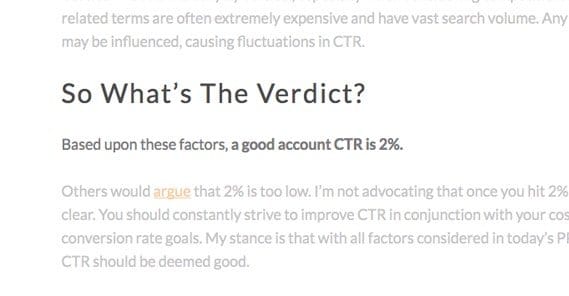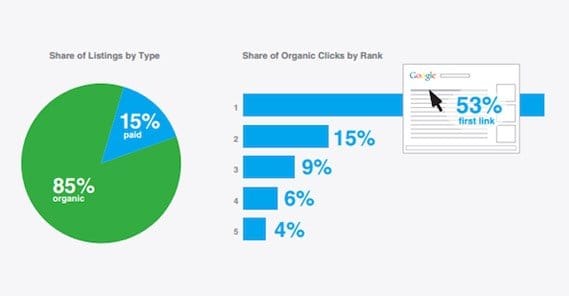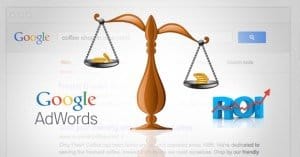What is a Good Click Through Rate Percentage?

Click through rate is an important metric. It’s the percentage of people who click your ads and land on your landing page, out of all the people who see your ads. Obviously, it’s a good idea to boost that number, right?
There are other considerations, of course. A CTR of 100% would be completely valueless to you if your total audience was 1 person. A CTR of 100% is also completely valueless no matter how large it is if your conversion rate is 0. However, you probably know all of this already. CTR is not the metric you want to die on, but it is an important metric, and it’s one you should know how to optimize.
The first part of optimization is understanding. So what affects your CTR? What’s the process, and what options do you have for improving it?
A String of Numbers
What’s an average click through rate? You can find numbers all over the web. PPC Hero back in 2014 said that a decent average CTR across all of your campaigns is about 2%. That may be a little low, but it’s also an average across multiple campaigns, some of which might be flops while others might be rip-roaring successes.

Wordstream concurs with the idea of 2% being a good CTR. Two out of every hundred viewers, or 20 per mille, that’s a reasonable number. Some people who see your ads will of course be accidental views, and some may be bots. A lot will simply not want to click ads when they’re looking for organic content.

However, Wordstream also adds in a graphic that you may find interesting, which shows the average CTR of different industries and the difference in CTR between organic search and paid advertising. Organic search always has a much higher CTR, ranging from double to 10x more. Tech, dating, financial, and B2B tend to have higher CTRs than some of the lower industries, such as legal, shopping, or advocacy.
Kerigan Marketing asked around and got 1-2% as good minimums, but that an ideal CTR is going to be higher. If your rates fall below 1%, you’re looking at a campaign that has some issues, and it’s something you’re going to need to investigate.
Hubspot replicates the industry and link type study that Wordstream did above, and came up with new numbers. Paid search CTRs ranged from .2% to .8%, while organic CTRs were anywhere from 1.4% to 3.4% on average across various industries.
My thinking is that anywhere from .5% to 1% is an average CTR for paid ads, with anything above 1% being a good goal. Organic search should never drop below 1.5% if you can help it, with 2% being an average level and 2.5% or higher as an ideal target. Anything higher than either of them is a great time for all.
Factors Affecting Click Through Rates
So what goes into your CTR, and how can you influence those factors to get more out of your ads? Higher CTR comes from better ads, but there’s more to it than that. Let’s look at each factor individually.
Organic Vs. Paid. Organic ads have a much higher average click through rate than paid ads, for a number of reasons. For one thing, organic search results tend to be more accurate at matching a query than paid ads, which go by specific keywords rather than very long tail keywords. For another thing, people tend to assume ads are meant to sell something rather than potentially just raise brand awareness, so they’re hesitant to click them. Finally, adblockers can throw a wrench into the works, sometimes counting ad views when the ad doesn’t actually load or is hidden from display.
Platform: AdWords, Facebook, Twitter, Etc. Different platforms will have different click rates. All of the numbers above were largely quoted based on the biggest ad network out there, that being Google’s AdWords platform in their display network. However, ads in other locations exist, such as Facebook ads. Facebook ads have the potential to be much more highly targeted than even Google organic search, but aren’t always optimized. As such, average data suggests that they have around a 1% CTR across all marketers. This includes those that have no idea what they’re doing, though, and optimized campaigns can average 3% or more.
Ad Relevance to Query or Site. The more relevant the ad is to the content of the query, the higher the click through rate is going to be. Likewise, for display ads on a blog or other website, the ad needs to be more relevant to the content. If I’m reading a post about fishing boats, an ad for a fishing boat is going to be more relevant and elicit more clicks than an ad about yachts, which itself is going to be better than an ad about dune buggies. Likewise, the relevance of the destination is going to affect your CTR in a more abstract way; people will grow to associate your brand with misleading ads and will be less inclined to click them in the future.
Ad Location: Above or Below the Fold. Ad positioning is important when ads are on a website. Ads will get more clicks when they’re plainly visible above the fold. Ads below the fold need to be something special, like native ads or in-text ads, to get as much of the clickshare as ads above the fold. This is simply because so many people never even scroll down on websites they visit.
Ad Type: Graphic or Text Link. Text links, so long as they aren’t obnoxiously flagged as ads, tend to get more clicks than ad banners in a majority of cases. This is generally because of the phenomenon known as banner blindness, where traditional banner locations on websites and blogs are generally ignored. People know instinctively that the content there is unlikely to be worth their time and tune it out, often without even realizing it.
Device: Desktop Vs. Mobile. Different devices will see different click through rates. Typically, desktop click rates will be lower than click rates on mobile devices. The flip side, though, is that volume on mobile devices tends to be lower. It’s only now that mobile internet usage is surpassing desktop usage, and only among certain niches, generally the more action- or task-oriented industries. People are more likely to search for restaurants than farming equipment via mobile device, right?
Industry. Once again, various industries have various average click through rates. You can refer to the chart on the Hubspot link above for recent numbers, though you can often find a new report published about once every six to twelve months.
Urgency: Local or Global. Click rates are going to be higher for ads that promise an immediate solution to a problem, which often means the query is going to be local. If someone is looking for a restaurant near their location, an ad for your restaurant showing up is going to mean a higher click rate, particularly if they included a particular type of food. The same can be said for pretty much any industry that can have immediate local appeal. Global and informational searches, answers to questions that can be found in a blog post or on a Wikipedia article, are much more likely to have lower click rates.
Emphasis: Informational or Acquisitional. The type of query matters as well, though this has some overlap with the previous point. If the user is searching for information or a tutorial, they’re more likely to want to click organic results that promise them to information, but they are less likely to click ads that are more likely sales landing pages. By contrast, if the user is performing a search with a query related to buying a product, an ad to that store that promises a discount or something similar is going to get more clicks than most organic results. It all comes down to matching the query to the intent.
Age of the Ad. The longer an ad has been present, the fewer clicks it’s going to have. This is why publishers tend to rotate their ads on a monthly basis, or even on a per-view basis. This does, however, tend to apply more to ads on sites or on social media rather than ads on search results. Search ads are more static; any time you search for flashlights, you’re going to see an ad for Maglite. On Facebook, though, if someone has seen your ad more than once or twice, they’re going to start to get sick of seeing it and will start to ignore it or even actively ignore your brand.
Targeting Factors. AdWords has some fairly robust targeting options, and Facebook ads are even better. The closer you are to your target demographics and the more matching targeting options you use, the smaller your audience, but the more interested they are in general. They will have a higher click through rate when you’re reaching them at the peak of their interest. Broad ads with few targeting options get much more exposure – for lower costs – but much lower click through rates.
Other Metrics to Consider
In addition to the factors that directly comprise click through rate, you also have to take other metrics into account. It’s one thing to have a high click through rate, and it’s quite another to be stuck with an extremely low number of conversions.
This will affect a variety of things with your marketing, foremost among them being your quality score. Google will recognize if you’re getting clicks but you’re not getting conversions, since they’re helping you track them. If you’re not getting conversions, something is wrong, and it generally has to do with the quality of your site and your landing page. A lowered quality score is a punishment for being bad at this whole marketing thing.
Here are a couple of metrics you can consider in addition to your click through rates themselves. As I said, CTR is good, but if you’re not doing anything with those clicks, it doesn’t really matter.
CTR Compared to Competitors. You might only have a .5% click through rate, and you might feel that it’s not very good. And, indeed, it might not be very good as far as click through rates go in general. However, that doesn’t mean it’s necessarily bad. If all of your major competitors are running similar ad campaigns, with similar ad spend, and they’re only getting a .3% click through rate, you can know that you’re firmly ahead of them in terms of clicks. Now, they could still be doing better than you if they have very low costs and high conversion rates, so it’s not a fool-proof indicator of success, but it’s always good to know where you stand in regards to your competition.
Conversion Rate. I’ve said it before and I’ll say it again; clicks mean nothing if they don’t convert. You want to get as many conversions out of your clicks as you possibly can. It’s fine to even sacrifice your click rate a little if it means getting more conversions, though that’s rarely a choice you’ll actually have to make. A conversion rate in general means the number of people who convert compared to the number of people who click, but you can also make it a calculation based on the number of people who see your ad in total. Just make sure if you’re comparing two numbers that they’re the same metric with the same calculation.
Cost Per Action. Costs are always going to be a factor as well. After all, pretty much every link outside of organic search is going to be a paid link, and that means you have an investment you need to recoup. You need to calculate the total costs and total profits of your ad campaigns, so you know if you’re making or losing money. You can also in general calculate the amount you have spend and figure out the cost per each view, the cost per each click, and the cost per each conversion. The lower the cost per action, the better off your ad campaign will be.
 ContentPowered.com
ContentPowered.com







